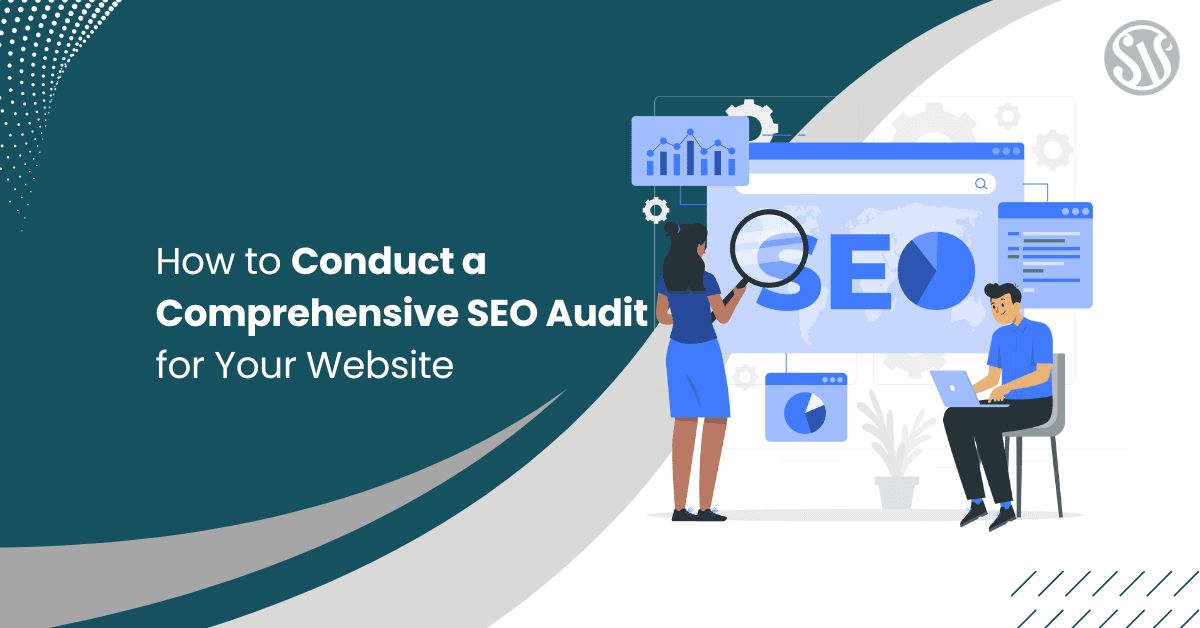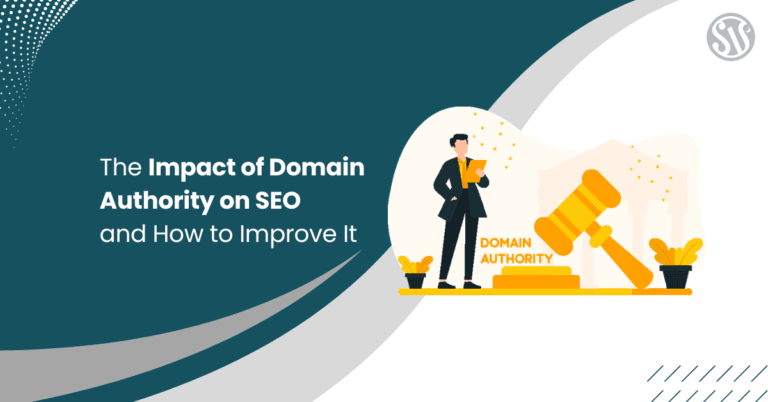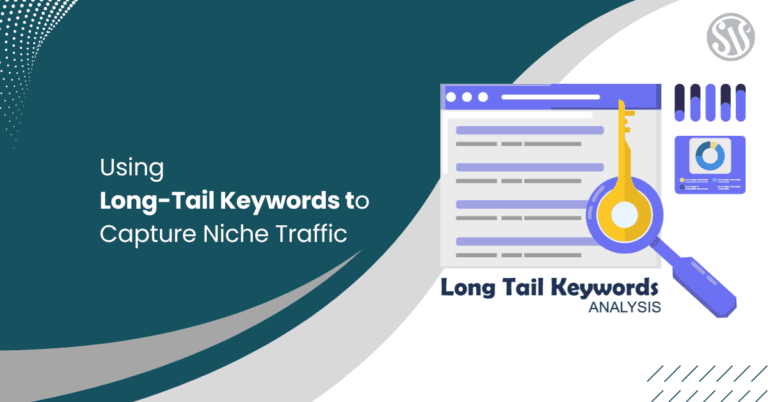How to Conduct a Comprehensive SEO Audit for Your Website
SEO is more than just sprinkling keywords throughout your content; it’s a multifaceted approach that covers technical performance, content quality, user experience, and off-page signals. Regularly auditing your website is essential to uncover hidden issues preventing your site from reaching its full potential in search engine rankings.
This comprehensive guide will explore the entire SEO audit process in detail. We’ll examine each critical component of SEO and provide you with actionable insights to optimize your website. Whether you aim to increase organic traffic, improve user experience, or adapt to evolving search engine algorithms, this guide will serve as your roadmap to success.
Why Conduct an SEO Audit?
Understanding the importance of an SEO audit sets the stage for a deeper dive into its specific benefits. From enhancing user experience to staying competitive, an audit helps ensure your website remains in peak condition. Uncovering hidden challenges and optimizing your site creates a foundation for sustained growth and improved search rankings.
Identify and Fix Technical Issues
Even the most beautifully designed website can suffer from technical issues that impede search engine crawlers from effectively indexing your content. An SEO audit can reveal hidden problems such as:
- Broken links: Dead or redirected links hinder user navigation and can confuse search engines.
- Slow page load times: Slow sites lead to high bounce rates and lower rankings.
- Duplicate content: Search engines may penalize or devalue pages with identical content.
- Improper URL structures: Complex or non-intuitive URLs can harm your site’s discoverability.
Enhance User Experience
UX directly influences your site’s search rankings performance. A seamless UX means visitors find your site easy to navigate and engaging, leading to higher conversion rates. An SEO audit helps you identify UX issues such as:
- Poor mobile optimization: With mobile devices accounting for most web traffic, non-responsive designs can severely impact user experience.
- Inefficient site architecture: A disorganized site structure makes it harder for users and search engines to find relevant content.
- Content readability issues: Lengthy, unformatted text and poor use of visuals can decrease user engagement.
Stay Ahead of the Competition
The digital world is dynamic, and your competitors constantly optimize their sites. An SEO audit helps you identify your weaknesses and provides insights into what your competitors are doing right. By benchmarking your site against industry leaders, you can:
- Discover new keywords and content opportunities.
- Analyze competitors’ backlink profiles.
- Learn best practices in content presentation and user experience.
Adapt to Algorithm Changes
Search engines frequently update their algorithms, and an audit ensures that your site complies with the latest standards. This proactive approach minimizes the risk of sudden ranking drops due to outdated practices or non-compliant site elements.
Maximize ROI
A well-executed SEO audit allows you to prioritize improvements directly affecting your organic search performance. Focusing on high-impact issues ensures that your time and resources yield the best possible return on investment.
Components of a Comprehensive SEO Audit
Before diving into the practical steps, it’s essential to understand the main components of an effective SEO audit. Each plays a crucial role in ensuring your website is fully optimized for search engines and users.
Technical SEO
Technical SEO involves optimizing the infrastructure of your website so that search engine bots can crawl, index, and render your pages efficiently. Key areas include:
- Site Speed and Performance: Faster websites provide a better user experience and receive favorable treatment from search engines.
- Mobile-Friendliness: With mobile search on the rise, ensuring your website is responsive is critical.
- XML Sitemaps & Robots.txt: These tools guide search engine bots in understanding which pages to crawl.
- Site Architecture: A well-structured site helps search engines and users navigate your content.
- Security (HTTPS): A secure website builds trust and is a ranking signal for search engines.
On-Page SEO
On-page SEO optimizes individual pages to improve search engine ranking and user experience. This includes:
- Keyword Integration: Ensuring your target keywords are used naturally within titles, headers, and content.
- Content Quality: Providing valuable, original content that meets the user’s intent.
- Meta Tags: Crafting compelling title tags and meta descriptions that accurately reflect page content.
- Internal Linking: Strategically linking between pages enhances site navigation and distributes link equity.
Off-Page SEO
Off-page SEO refers to the activities outside your website that impact your search rankings. It mainly involves:
- Backlinks: Acquiring high-quality backlinks from reputable websites.
- Social Signals: Leveraging social media shares and mentions to boost your SEO indirectly.
- Brand Mentions: Even unlinked brand mentions can influence your online authority.
Content Analysis
Content is at the heart of any SEO strategy. A thorough content audit examines the relevance, quality, and uniqueness of your website’s content:
- Content Freshness: Keeping your content up-to-date to remain relevant.
- Content Gaps: Identifying topics that your competitors cover but you don’t.
- Duplicate Content: Addressing any repeated content that might confuse search engines.
UX
User experience is a significant factor that affects both user engagement and SEO. A great UX includes:
- Intuitive Navigation: Easy-to-use menus and clear site structure.
- Attractive Design: Visually appealing layouts with optimized typography and imagery.
- Interactivity: Features that engage users, such as interactive forms and comment sections.
Step-by-Step Guide to Conducting an SEO Audit
With a clear understanding of the essential components, let’s examine a step-by-step process for conducting a comprehensive SEO audit.
1. Set Clear Objectives
Before you start, define what you aim to achieve with your SEO audit. Your objectives might include:
- Increasing organic traffic.
- Identifying and fixing technical issues.
- Improving mobile usability and page speed.
- Enhancing content quality.
- Benchmarking your performance against competitors.
Establishing clear objectives will help you focus on the most critical areas and measure the audit’s success.
2. Assemble Your Toolset
A successful SEO audit requires the right tools. Here’s a list of must-have resources:
- Google Analytics: Monitor site traffic, user behavior, and conversion rates.
- Google Search Console: Identify crawl errors, indexing issues, and overall site health.
- SEO Crawlers: Tools like Screaming Frog or Lumar help you scan your website for technical issues.
- PageSpeed Insights & GTmetrix: Evaluate your site’s loading speed and performance.
- Mobile-Friendly Test: Use Google’s Mobile-Friendly Test to ensure your site works well on mobile devices.
- Backlink Analyzers: Platforms like Ahrefs, Moz, or SEMrush offer insights into your backlink profile.
- Keyword Research Tools: Google Keyword Planner, SEMrush, or Ahrefs help you discover keyword opportunities.
Gathering data from these tools creates a robust foundation for your audit.
3. Perform a Technical SEO Audit
Technical SEO is the backbone of your site’s performance. Here’s a comprehensive checklist:
A. Site Architecture and Crawlability
- Run a Site Crawl: Use an SEO crawler to scan your website. Look for broken links, orphaned pages, and duplicate content.
- URL Structure: Check that your URLs are clean descriptive, and utilize hyphens to separate words. Avoid excessive parameters or unnecessary complexity.
- XML Sitemap: Verify that your XML sitemap has been updated and submitted to Google Search Console. It should include all critical pages.
- Robots.txt File: Review your robots.txt file to ensure it’s configured correctly, allowing search engine bots to crawl essential pages while restricting irrelevant ones.
B. Site Performance and Speed
- Page Speed Analysis: Use Google PageSpeed Insights and GTmetrix to test your website’s load times. Identify problematic pages and work on optimization.
- Hosting and Server Response: Evaluate your web hosting performance. Slow server response times can harm your rankings. Consider a CDN for faster global load times.
- Image Optimization: Ensure all images are compressed and optimized. Tools like TinyPNG or plugins that automate compression can help maintain quality without sacrificing speed.
C. Mobile Optimization
- Responsive Design: Confirm your website uses responsive design so it adapts seamlessly across all devices. Test on various mobile devices and screen sizes.
- Mobile Speed: Identify and fix any mobile-specific issues. Mobile page speed is crucial since mobile-first indexing is now the norm.
D. Security and Accessibility
- HTTPS Implementation: Ensure that every page is served over HTTPS. Mixed content (secure and non-secure elements on the same page) can damage user trust and rankings.
- Accessibility Check: Use tools like WAVE or Lighthouse to assess your website’s accessibility. This includes checking for alt tags on images, appropriate contrast ratios, and navigational aids for users with disabilities.
4. Dive into On-Page SEO
Once the technical foundation is solid, optimize individual pages to maximize their potential.
A. Title Tags and Meta Descriptions
- Unique Titles: Every page should have a unique title with your primary keyword. It should be enticing and informative.
- Meta Descriptions: Craft unique meta descriptions for each page. These should summarize the page content and include relevant keywords. Although meta descriptions aren’t direct ranking factors, they impact CTR.
- Length Guidelines: Ensure titles and descriptions adhere to recommended character limits to avoid truncation in search results.
B. Headers and Content Formatting
- Effective Use of Headers: Structure your content using header tags (H1, H2, H3). The H1 tag should denote the page’s main topic, while subheadings organize supporting information.
- Readability: Break up content with bullet points, numbered lists, and multimedia elements. This improves user engagement and helps search engines understand the content structure.
- Keyword Placement: Use target keywords naturally throughout the content. Avoid keyword stuffing by focusing on the user’s intent and the overall flow of the text.
C. Content Quality and User Engagement
- High-Quality, Original Content: Content should be well-researched, engaging, and provide value to the reader. It must satisfy the user’s search intent.
- Content Updates: Regularly update older content to keep it relevant. This signals to search engines that your website is current and continuously improving.
- Internal Linking: Create a strategic internal linking structure. This will guide visitors to related content and help distribute link equity across your site.
- Multimedia Elements: Enhance content with relevant images, videos, infographics, and charts. This can increase user engagement and dwell time.
D. URL Optimization and Canonicalization
- Descriptive URLs: Ensure URLs are concise and descriptive. Use hyphens instead of underscores to separate words.
- Canonical Tags: Address duplicate content issues by using canonical tags. This informs search engines which version of a page is the preferred one.
5. Analyze Your Off-Page SEO
Off-page SEO is essential for building your site’s authority and improving rankings. Here’s how to assess and enhance your off-page strategy:
A. Backlink Profile
- Quality Backlinks: Focus on earning high-quality backlinks from authoritative websites. Use tools like Ahrefs or SEMrush to review your link profile.
- Toxic Link Identification: Identify and disavow any spammy or low-quality backlinks that may harm your site’s credibility.
- Diverse Link Sources: Ensure that your backlink profile is diverse. A healthy mix of links from blogs, news sites, directories, and industry-specific websites is ideal.
B. Social Signals
- Social Media Engagement: Although social signals aren’t direct ranking factors, strong engagement on social platforms can drive traffic and indirectly benefit SEO.
- Content Sharing: Make sure your content is easily shareable. Implement social share buttons and encourage visitors to share your posts.
C. Brand Mentions
- Monitor Mentions: Track unlinked brand mentions using tools like Google Alerts. Contact sites that mention your brand to request a proper backlink.
- Reputation Management: Building a positive brand image online can also increase search rankings.
6. Conduct a Thorough Content Audit
Content is at the core of your SEO strategy. A detailed content audit will help you pinpoint opportunities and areas for improvement.
A. Inventory and Categorize Content
- Create a Content Inventory: List every page and blog post on your site. Use spreadsheets or dedicated content auditing tools to organize the data.
- Categorize by Quality: Evaluate each piece of content for quality, relevance, and engagement metrics. Mark outdated or underperforming content that may need updating or removal.
B. Identify Content Gaps
- Competitor Analysis: Compare your content with that of competitors. Identify topics or keywords that they cover extensively, but you do not.
- User Feedback: Review comments, survey responses, and social media interactions to understand what topics resonate with your audience.
C. Optimize Existing Content
- Keyword Refresh: Revisit your keyword strategy and incorporate current trends and search intent. Update meta tags and headings accordingly.
- Content Expansion: Consider expanding shorter posts or merging similar topics to create comprehensive guides that provide more excellent value.
- Multimedia and Interactivity: Enhance content by integrating new multimedia elements, interactive features, or downloadable resources.
7. Perform Competitor Analysis
Understanding your competitive landscape is essential for refining your SEO strategy.
A. Identify Competitors
- Direct Competitors: Focus on websites in your industry that target similar keywords and demographics.
- Content Leaders: Identify sites that consistently rank at the top of search engine results and analyze their strategies.
B. Benchmarking Metrics
- Traffic and Engagement: Use tools like SimilarWeb or SEMrush to compare your site’s traffic, bounce rates, and time with your competitors.
- Keyword Overlap: Analyze which keywords your competitors rank for that you might be missing. Look for long-tail keyword opportunities.
- Backlink Analysis: Review competitor backlink profiles to uncover potential link-building opportunities and authoritative sites that could also link to your content.
Implementing Your Audit on a WordPress Site
WordPress is the platform of choice for millions of websites due to its flexibility and robust ecosystem of plugins. Here’s how to tailor your SEO audit specifically for a WordPress site.
Choose a Reliable SEO Plugin
- Yoast SEO or Rank Math: These plugins offer real-time SEO recommendations, help generate XML sitemaps, manage meta tags, and provide readability analysis. They serve as an excellent starting point for ongoing optimization.
Optimize Your Theme and Plugins
- Responsive Theme: Ensure your WordPress theme is responsive, fast, and follows SEO best practices. Test your theme on different devices and screen sizes.
- Plugin Audit: Review your installed plugins. Remove outdated, redundant, or conflicting plugins that might slow your website or create security vulnerabilities.
Optimize Media and Images
- Image Compression: Use plugins like Smush or EWWW Image Optimizer to automatically compress images without compromising quality.
- Alt Tags: Ensure every image has an appropriate ALT tag that describes its content. This is crucial for accessibility and can help with image search rankings.
Streamline Your Site Structure
- Permalink Settings: Check your permalink structure under WordPress settings. A search engine–friendly URL (e.g., /post-name/) is ideal.
- Navigation Menus and Breadcrumbs: Use WordPress’s menu editor to create straightforward, intuitive navigation. Breadcrumbs can enhance user experience and assist search engines in understanding your site’s hierarchy.
Regular Maintenance and Updates
- Content Scheduling: Utilize WordPress’s scheduling features to publish fresh content regularly.
- Core, Theme, and Plugin Updates: Keeping your WordPress core, theme, and plugins updated is essential for security, performance, and SEO.
- Backup and Security: Regularly back up your site and use security plugins to safeguard it from vulnerabilities that could indirectly affect your SEO. UpdraftPlus is a popular WordPress backup plugin.
Advanced SEO Audit Techniques
Once you’ve mastered the basics of an SEO audit, it’s time to delve into some advanced techniques to refine your strategy further.
A. Schema Markup and Structured Data
- Implementing Schema: Use schema markup to help search engines better understand your content. This can lead to rich snippets, which improve visibility in SERPs.
- Testing Tools: Use Google’s Structured Data Testing Tool or Rich Results Test to ensure your markup is correct and effective.
- Local Schema: For local businesses, implement local business schema to enhance local search visibility.
B. Log File Analysis
- Understanding Crawler Behavior: Analyzing your server log files can provide insights into how search engine bots interact with your site.
- Identifying Crawl Errors: Use log file analysis to uncover frequently crawled but not indexed pages and identify any potential crawl errors that need addressing.
C. Content Pruning and Consolidation
- Removing Underperforming Content: Sometimes, removing or merging low-performing pages can improve your overall site quality.
- Canonicalization: Ensure content consolidation is done using canonical tags to preserve link equity
D. Conversion Rate Optimization (CRO)
- Tracking User Behavior: Incorporate heat maps and session recordings to understand how users interact with your site. Tools like Hotjar or Crazy Egg can be invaluable.
- A/B Testing: Regularly test changes to your landing pages, CTAs, and forms to optimize conversion rates. An SEO audit with CRO elements can provide a more comprehensive view of your site’s performance.
E. Voice Search Optimization
- Natural Language Queries: With the rise of voice search, optimize content to answer conversational queries. Focus on long-tail keywords and FAQs.
- Featured Snippets: Structure content to appear in featured snippets—an essential source of traffic for voice search results.
Monitoring, Maintenance, and Future-Proofing
SEO is not a one-time task—it’s a continuous process. Regular monitoring and updates are crucial to maintaining and improving your website’s performance.
A. Regular Audits
- Establish a Routine: Schedule regular audits, quarterly or bi-annually, to catch issues before they become significant problems.
- Update Your Strategy: Adjust your SEO audit checklist to align with the latest best practices as search engine algorithms evolve.
B. Keeping Up with Trends
- Follow Industry Experts: Subscribe to blogs like Search Engine Journal, Moz, and SEMrush to stay updated on new trends and algorithm updates.
- Attend Webinars and Conferences: Participate in SEO conferences and webinars to gain insights and network with industry professionals.
C. Data-Driven Adjustments
- Analytics Monitoring: Continuously monitor key performance metrics through Google Analytics and Search Console. Pay attention to traffic patterns, bounce rates, and changes in conversion metrics.
- Feedback Loops: Use user feedback, social media comments, and customer surveys to gauge the effectiveness of your SEO changes.
D. Investing in Future Technologies
- AI and Machine Learning: Explore AI-powered tools for content creation, keyword research, and predictive analytics. These can streamline your audit process and provide deeper insights.
- Mobile-First and Beyond: With mobile-first indexing in full swing, always prioritize mobile performance. To enhance user experience, watch for emerging technologies like Progressive Web Apps (PWAs).
Final Thoughts
A well-executed SEO audit is an investment in the future of your online presence. By dedicating time and resources to understanding and optimizing your website, you are setting the stage for sustained growth and competitive advantage in the digital marketplace.
Take the insights from this guide, implement them on your WordPress site, and monitor the results. Whether fixing technical glitches, enhancing your content, or refining your off-page strategy, every step counts toward building a robust and effective SEO foundation.
Thank you for reading this comprehensive guide on conducting a complete SEO audit. If you have any questions or comments or need further assistance, please comment below or contact us directly. We’re here to help you succeed in your SEO journey!







